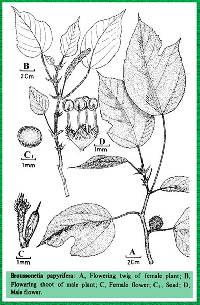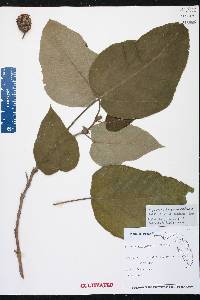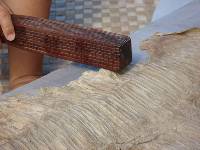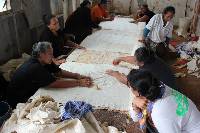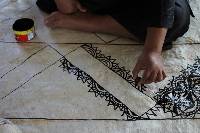
| Broussonetia papyrifera (L.) Vent. Tabl. Regne Veg. 3: 547. 1799; Seem. FI. Vit. 246. 1868; Drake, Ill. FI. Ins. Mar. Pac. 295.1892; Christophersen in Bishop Mus. Bull. 128:73. 1935; Yunckerinop. cit. 178:46.1943, in op. cit. 184:35.1945, in op. cit. 220: 97. 1959; J. W. Parham, Pl. Fiji Isl. 91. 1964, ed. 2. 135. 1972; Sykes in New Zealand Dept. Sci. Indust. Res. Bull. 200:124.1970; B. E. V. Parham in New Zealand Dept. Sci. Indust. Res. Inform. Ser. 85: 134. 1972. Figure 60. Morus papyrifera L. Sp. Pl. 986. 1753. A slender, erect shrub or tree cultivated in or near villages near sea level. As seen in Fiji, Broussonetia papyrifera attains a height of about 4 m. and is then harvested for its bark; no fertile specimens have been observed. The species may attain a height of 12 m. where indigenous, bearing yellow to red drupes. Typification: Of the two prior references given by Linnaeus, probably the better lectotype is Kampfer, Amoen. Exot. 471. 1712, especially if an illustration of Kampfer’s Japanese collection is available. Distribution: Indigenous in China and Japan, and probably also in Burma and Thailand, early spreading in cultivation throughout Malesia and the Pacific. Local names and uses: The most commonly used Fijian names are masi, ai masi, and malo; also reported are masi ndina, ai masi vutu, and kalakalailea. This was a very important economic plant in Fiji and elsewhere in the Pacific, where it was doubtless an early aboriginal introduction. Its bark was made into cloth that, either white or variously dyed and ornamented, served as the principal item of clothing. It is still widely made in Fiji and is used for ceremonial wear or decorative use. The cloth itself is often known as ngatu, or as masi or malo modified by various adjectives to indicate the intended use. Sometimes the Polynesian word tapa is used in Fiji for the finished product. Seemann (1868, cited above) provides an extensive discussion of the preparation and uses of the bark-cloth made from Broussonetia papyrifera, and he also uses the English name paper mulberry. Available collections: VITI LEVU: Ra or Tailevu: Wainimbuka River Valley, DA 5618. Naitasiri: Central Agricultural Station, DA 3392. Rewa: Langgere, DA 13899. KORO: East coast, Smith 1097. NGAU: Milne 155. TAVEUNI: Tavuki, near Wairiki, DA 8934. YATHATA: Yathata Village, DA 15559, 15560. VANUA MBALAVU: Lomaloma, Tothill 768. NAMUKA-I-LAU: Bryan 474. Seemann (1868) implies that he also collected specimens but did not provide a number, and no such material has been seen. |
Copyright ©2018. This sandbox portal development is powered by Symbiota software. Usage Policy.



